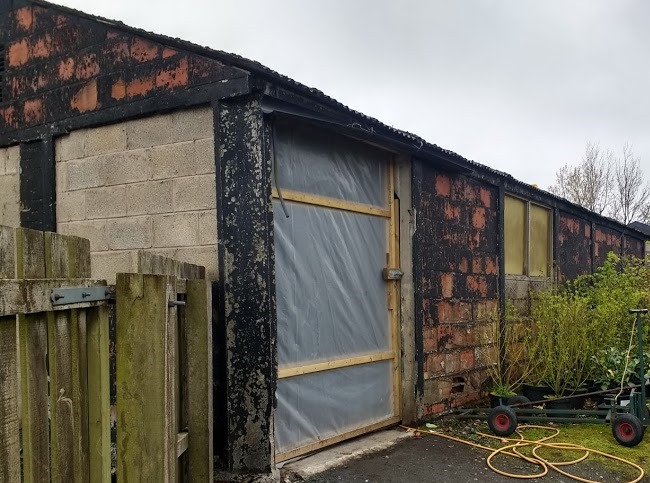-
07540 274737
Prisoner of War Camp
Moota started life as a World War Two prisoner of war camp in 1942.
A thousand German and Italian prisoners were kept at Moota.
Many camps like Moota were built on wild moors to make escape difficult.
Whilst the occupants were prisoners of war, unlike those in some other Lake District area camps which held some high risk prisoners who were considered dangerous, and were kept secure, those at Moota were classified as low risk and were allowed out of the camp to work on local farms, earning a small amount of money for their own use. There is mention in a booklet produced by the Allonby History Group, of the beck in Allonby on the nearby coast, which formerly was very shallow, being dug out quite deeply to help with flooding, with the work being done by Italian POWs from the Moota camp.
Moota itself accommodated 1,000 prisoners, many of whom were brought from camps in the USA, by ships that docked at Liverpool, to work on farms and help to feed Britain.
One inmate of whom some information is available, was Erich Spiegel, a horseman and farm worker before the war, arrived in Britain in 1946 from a prisoner of war camp in New Jersey, USA after being captured in May 1944 at the Battle of Monte Cassino.
He stayed in the camp for a year and four months and was released from POW status in 1947. He died in Whitehaven in 1965.
After the war the camp was used to house 'Displaced Persons', who were mainly Eastern Europeans who could not, or did not wish to, return to the communist countries of their origin. Eventually many were allowed to stay, and the descendants of some still live in the local area with many staying on after the war, marrying local girls and settling into West Cumbrian society.
There is sad mention of the suicide of two of these young men because of their perceived hopeless situation. An article about the sad events during the 'Displaced Persons' era of the Moota camp can be read by following the link below:-
https://2ndww.blogspot.com/2009/04/father-mccann-and-moota-ymca-hostel_16.html
Websites giving further interesting details about the Moota camp can be seen via the links below:-
http://www.cockermouth.org.uk/history/mootachapel.htm
https://content.govdelivery.com/accounts/UKCCC/bulletins/289c8d1
Some of the text is based on a 2005 article in the West Cumberland Times and Star.
https://www.timesandstar.co.uk/news/17063312.moota-demolition-will-sever-link-with-history/
Moota was later converted into a turkey farm and then into one of the first motels in Cumbria which closed a few years ago.
There remain a few buildings from the Prisoner of War camp era in the garden centre which now occupies the site. Some of the current garden centre buildings are converted prison huts. The picture below shows one such building which has not been altered much externally.

But the prisoners left their mark on Moota. They left behind them some beautiful wall paintings and a wonderful chapel with religious paintings and Biblical quotations, in German, on the walls.
A chapel was made by prisoners out of an ordinary barrack block. It was almost entirely the work of one man, working in poster colour on giant pictures which filled whole sections of the barrack hut. It was a riot of colour, and although one huge panel would immediately seem to clash with the colour of the next, the whole was in harmony; a great mass of silent, unmoving but oh-so-colourful figures filling every wall and all the ceiling, culminating in an altar-piece which filled the entire end of the building. The artist used his friends in the camp as models for the Biblical figures, but he left the camp before the job was completed and the remaining spaces were filled in by a less artistic hand.
Unfortunately, later, the paintings were destroyed by somebody with anti-German feelings.